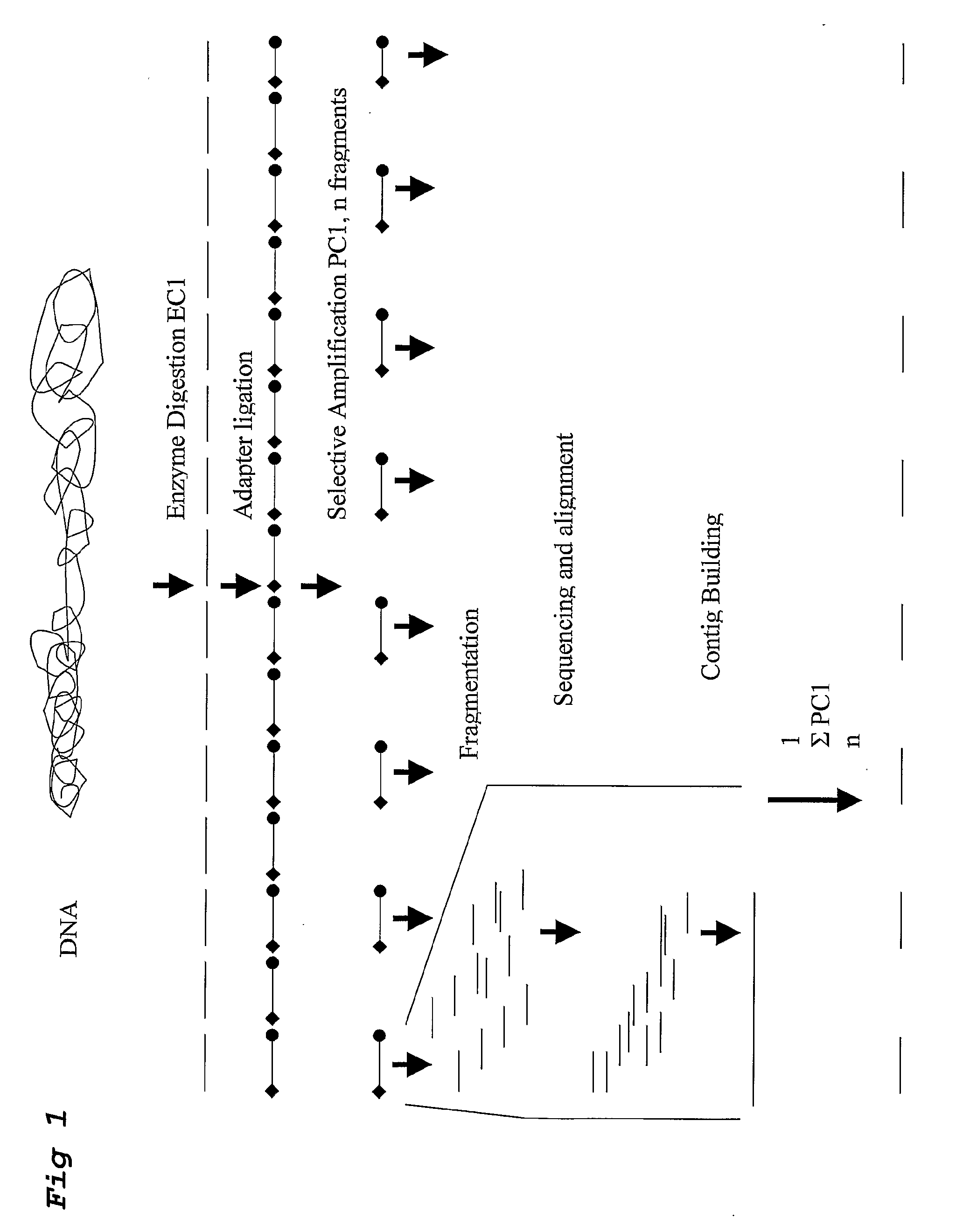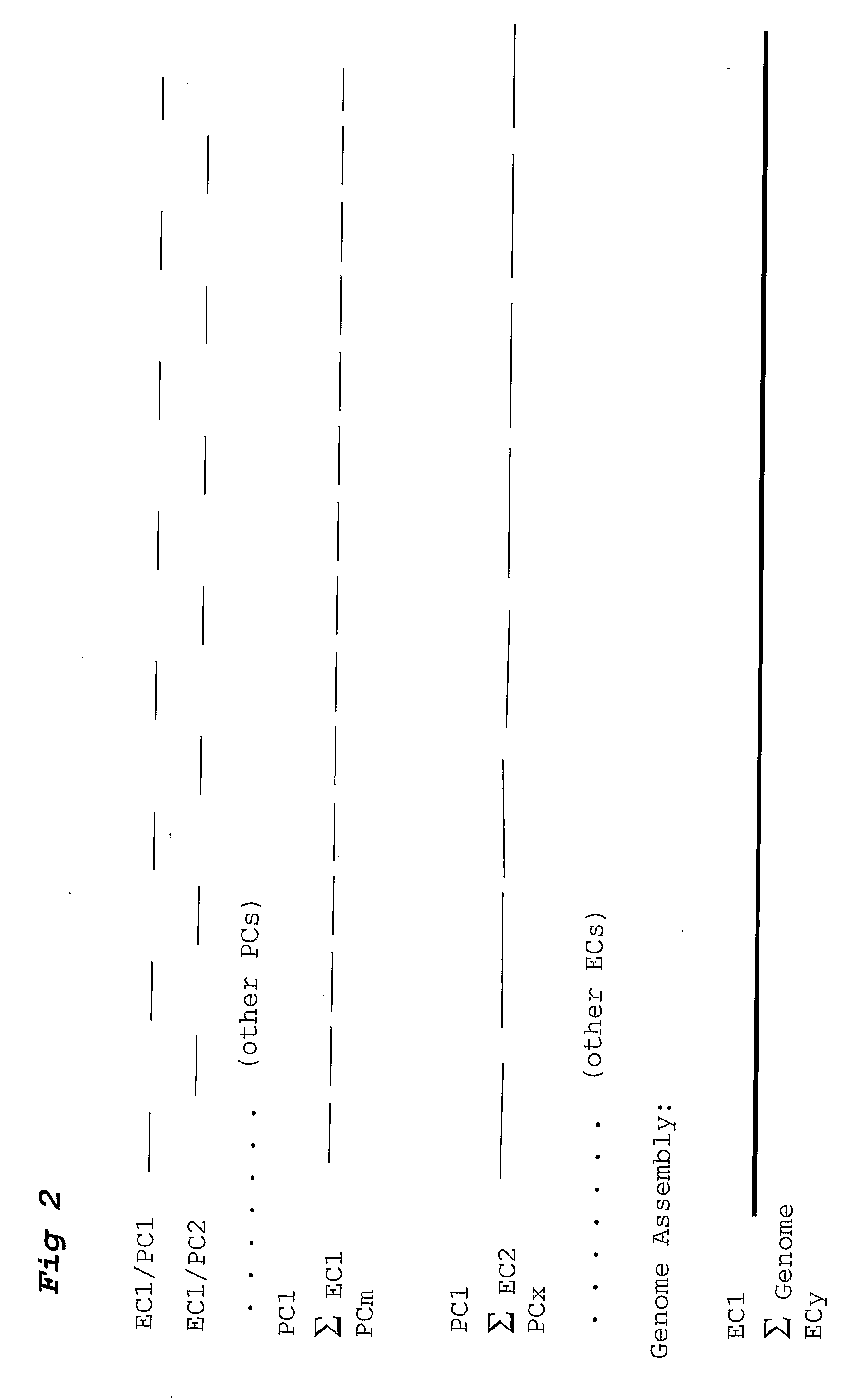Strategies for sequencing complex genomes using high throughput sequencing technologies
a genome and high throughput technology, applied in the field of molecular biology and genetics, can solve the problems of complex assembly of whole genome shotgun sequences to draft genome sequences, complicated problems, and current methods of sequencing a relatively expensive and time-consuming quest, and achieve high throughput sequencing. , the effect of efficient us
- Summary
- Abstract
- Description
- Claims
- Application Information
AI Technical Summary
Benefits of technology
Problems solved by technology
Method used
Image
Examples
example 1
[0109]This example describes the ability to use high throughput sequencing of AFLP fragments derived from 2 restriction enzyme combinations to determine the genome sequence of a complex plant genome.
[0110]The following steps were taken in this example:
[0111]A) in silico prediction of AFLP restriction fragments of the Arabidopsis genome sequence (Genbank), using the software tool RECOMB, described in WO0044937 (Keygene N.V).
[0112]The entire genome sequence of Arabidopsis genome (ecotype Colombia) was downloaded from Genbank. In silico AFLP+1 / +1 fragments for the restriction enzyme combination BamHI / XbaI using +C and +G selective nucleotides, respectively, were predicted using RECOMB. Similarly, AFLP+1 / +2 fragments for the restriction enzyme combination EcoRI / HindIII using selective nucleotides +C and +CT were predicted. The collection of AFLP fragments derived from the two in silico digests resulted in various (of approximately 14) overlapping AFLP fragment sequences between the enzy...
PUM
| Property | Measurement | Unit |
|---|---|---|
| length | aaaaa | aaaaa |
| size | aaaaa | aaaaa |
| composition | aaaaa | aaaaa |
Abstract
Description
Claims
Application Information
 Login to View More
Login to View More - R&D
- Intellectual Property
- Life Sciences
- Materials
- Tech Scout
- Unparalleled Data Quality
- Higher Quality Content
- 60% Fewer Hallucinations
Browse by: Latest US Patents, China's latest patents, Technical Efficacy Thesaurus, Application Domain, Technology Topic, Popular Technical Reports.
© 2025 PatSnap. All rights reserved.Legal|Privacy policy|Modern Slavery Act Transparency Statement|Sitemap|About US| Contact US: help@patsnap.com



